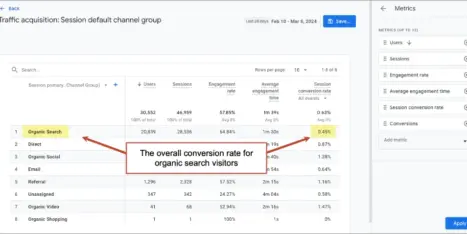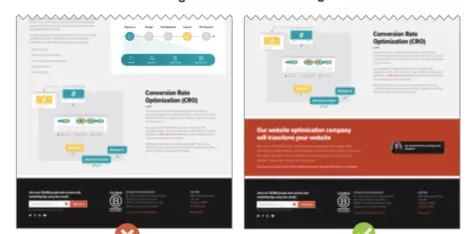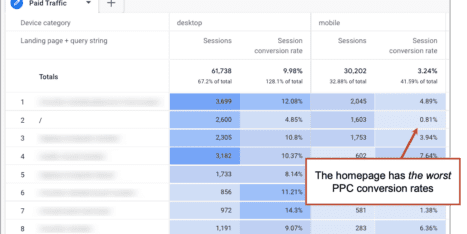Content specialists of the world, gather ’round. I know that there is a fear that you have, deep down in those places you prefer to ignore. You go to seminars and conferences that tell you the importance of analytics and measurement. You nod along. But when you log into Google Analytics when the moon is blue and look at the dizzying array of numbers and charts, you run terrified back to the safety of a world in which content is king.
Let’s be honest, you became a writer and marketer because you didn’t do well at math in school and are still vexed by all those numbers.
So I’m going to make this super easy on you and boil this into three cardinal rules about analytics. This will help you mentally filter out the junk you absolutely don’t need to care about and focus on what’s going to be truly useful to you.
 |
Anything can be measured, but only a few things are worth measuring. |
Google prides itself on adding more numbers and ways of comparing number X versus number Y (even when no reasonable person needs to know that answer). Don’t worry. Rule number one is all about you understanding that the pros only look at a handful of numbers. The trick is figuring out what’s really useful and ignore what you don’t need.
This rule is as much psychological as anything. You don’t have to know the ins and outs of every number. Most of them are worthless to you and will only serve to confuse you. Even the pros only look at a few, so don’t worry that you need to be an analytic ninja to do this.
Here area some questions to ask yourself:
- Why on earth would you care what browser is the most popular on your site?
- How useful is the knowledge of the speed of your site (unless you know how to tune a server)?
- Every time I look at “percentage of new vs. returning visits” I wonder, “Do I want more new people, or people who found me, like me, and come back?”
 |
Aggregate numbers only look useful. They lie. |
Yay! You hit 100 visits a day! Congratulations! Your average page view time is over two minutes for the first time! Amazing!
Do those things matter? No. But Google puts those numbers big and bold right on the front page after you login, as if they were useful. Those aggregate numbers don’t have any real value. They collect all the numbers and bundle them up when you really want them broken down into meaningful chunks.
Do you get excited when the Dow Jones goes up 200? You might if you own stock. But if your stock goes down when the others go up, the Dow looks great but you got poor. Sneaky, huh?
The same holds true for analytics. 1000 visitors? That’s great unless all of them were bounces. Two minute visit duration? Do you really think anyone can get much value out of your site in two minutes?
That’s an average, so it means most people bounced (visit time: zero) so some people were on longer than two minutes. But was it a lot of people on for three minutes or one person who walked away from their computer to get lunch while they were on your site?
See? Aggregated numbers are junk. Ignore them. Your job is to break them down into segments like:
- visitors who didn’t bounce
- visitors who bought something
- visitors who downloaded my ebook
- visitors that filled out my lead form
Those are called conversions and that’s what’s worth measuring. Then you can compare the segments who did convert and those who didn’t. That’s useful information.
 |
If you aren’t ready to change based on the data, don’t bother measuring. |
Google Analytics is free. With barriers to entry so low, there is absolutely no excuse not to use it (or some other analytics tool) to measure what your site is doing.
That said, if you aren’t going to change anything based on the numbers, don’t look at them. If technology, politics, or your own ego mean more to you than the numbers, stop looking at the numbers. Don’t give yourself heartburn.
So what should you focus on?
Pick the metrics that matter to know.
- Own a blog? Focus on the number of views from each of your top sources, what pages they come in on and what they leave on. That will help you understand what your audience wants.
- Own a store? Look at keywords and terms (from Google and your own site search) to tell you what your audience wants. Look at where they leave, either at your shipping terms, your credit card page, or whatever to tell you if you have structural problems getting in your customers’ way.
- Run a brochure site? Pick everything on your site that gets you closer to a sale and set up goals around them. See who sends you the most conversion traffic, and what the keywords were.
Understanding your market makes you a better company owner.
The three cardinal rules of analytics aren’t at all technical, but they should help you get a better grip on what you need to know and whatmight help you. If you have any tips, I would love to hear them in the comments below!




